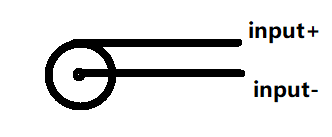Other Parts Discussed in Thread: OPA838, OPA835
Hi,
The following is my circuit.
It work well when simulating But not work After I solder this circuit on PCB.
I want to know if opa847 don't use the Non-inverting Input in differential and it just only use the inverting input like in datasheet(page 1).
Anyone help me, thanks!




